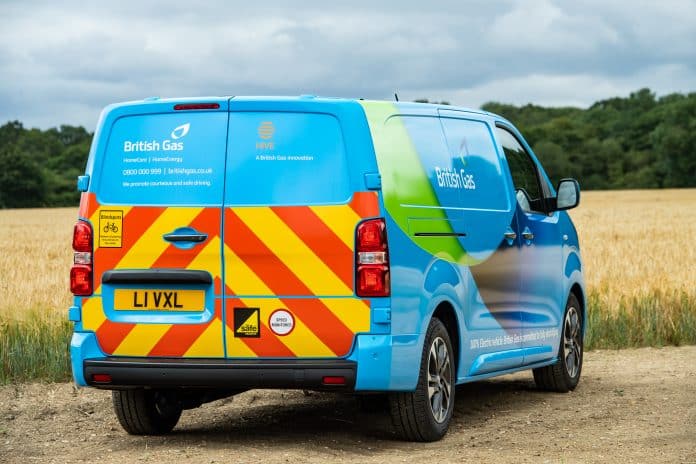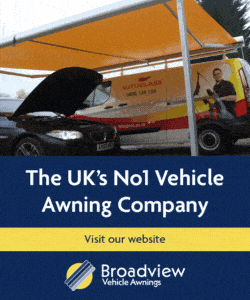Operators of large LCV fleets are increasingly taking the lead in the vital mission to lower emissions. Essential services are supported by vehicle fleets that operate in all environments, often on a constant basis so the announcement that British Gas has placed the largest ever order for electric vans – 1000 Vauxhall Vivaro e-Vans – has a huge significance. Essential Fleet Manager was delighted therefore to catch up with James Rooney – Fleet Engineering & Innovation Manager at Centrica – who gives us the background to this milestone order.
The British Gas fleet is one of the largest in the UK. How is it currently composed and what proportion will be electric after the completion of the deliveries of the Vivaro E Vans?
We have about 9,500 commercial vehicles – all under 3.5T and a car fleet of around 1,500 vehicles. We have ordered 1,000 Vivaro-e vans which are now starting to be delivered, which will transfer our commercial fleet to just over 10% EV, or 9% for the total fleet. We are also pushing hard with our company cars to quickly move from ICE only to EV and PHEV.
How are these vehicles deployed on a daily basis?
Centrica fleet operates across a few companies and trading names – such as Dyno rod, Phjones, Centrica Business Solutions and Hive to name but a few. Our largest business for fleet is of course British Gas. In this all our engineers take their vehicles home, we don’t have any depots. The engineers tend to live in or close to the patch they work in and have a generally low daily mileage as they tend to customer boiler and central heating breakdowns, home improvements or fitting smart meter technology.
How do you approach the management of risk associated with large numbers of drivers?
We operate an in-house developed driver risk management system (DRMS) which takes feeds from a variety of sources, including license mandates, previous accidents and unfair wear and tear charges. It also takes day to day penalties such as tyre wear, telematics score and wing mirror replacements. The system is used not only to recognise those drivers who could require training, but also reward those who are driving ambassadors for the company and will be invited to the yearly Centrica Safe Driver of the Year awards.
What are the day to day challenges in managing a fleet consisting of 12,000 vehicles?
Downtime is of course the biggest issue, but we try to minimise this with pre-emptive maintenance, correct vehicle selection and managing asset age before disposal. With such a large fleet, small issues can very quickly become large, but we ensure that all technology and changes to the status quo are fully tested and trialled before coming into the main fleet to minimise any issues down the road. The new challenges are more around clean air zones and other mandates which could limit our ability to operate in city centres.
What was the process the lay behind the decisions on which vehicles could be switched to electric – What were the priorities?
We have been trying to electrify since 2013 – in theory our fleet should be easy. Mainly small vans, low daily mileage and all engineers starting their day at home. Sadly that’s not the case as so many are finding out! Our process takes engineer’s historic driving data – daily mileage, average speed, location and others – and ranks them as a score amongst their colleagues. The higher the score, the better suited they are to electrification. There are some very large vehicles on fleet with high daily mileage which will take a while to electrify due to lack of applicable product, but we can now look to electrify a decent amount of our fleet with products that are now on the market.
You aim to have the whole fleet electrified by 2030. What other objectives and targets are you considering in your overall fleet strategy?
Our business is changing as well as the fleet, with gas boilers due to be phased out the fleet will need to adapt to different customer wants and needs with regards to domestic and commercial heating. We are also installing electric vehicle charge points and expanding our range of home electrical services. All this means we need to increase our van size to allow for the larger stocks and parts needed for all of this. Electrifying does have the benefit of helping with this however, as we are moving engineers up from a small van (typically a Combo or Caddy) into a medium sized vehicle – the Vauxhall Vivaro-e. We are also moving towards far more ADAS equipment as standard, having taken radar activated emergency braking since 2015. This is now a vital aspect of our fleet requirement and has been expanded to include blind spot detection, lane assist and electric folding wing mirrors – all of which help to keep our engineers safe and reduce damage.
What challenges do you foresee in achieving your objectives?
Again – product availability and charging infrastructure. Vans are always last to have new technology fitted and whilst most OEM’s are stepping up to the plate with ADAS equipment and electric vehicles, this always takes time over the more profitable car and truck sectors.
Could you detail the specification of the new vehicles. How are they fitted out and what technology are you utilising?
They are the 75KWh version, which help our engineers be more dynamic and cover the all important night time call outs in which they can cover many miles. They will be fitted out exactly the same as our diesel vehicles at our racking converter, Bri-Stor. They are packed with technology to aid the driver maintain concentration, and reduce accidents. We have fitted sight and light packs, safety packs and android auto. This provides a much bigger map than expecting an engineer to use a small phone screen as a sat-nav!
We’re aware of other large fleet operators that have opted for the Vauxhall Vivaro E Van. What were the main factors that influenced your decision?
It is probably the best vehicle on the market currently – as far as range and payload are concerned. Most vans to date have had a 40KWh battery or smaller, and whilst this may work in very urban areas, it didn’t work for us.
Did you go through a consultation process with your drivers before decisions were made on the new vehicles?
Absolutely. With any new vehicle we take on we conduct full user groups and ensure full and thorough testing before moving a vehicle forwards and writing the business case for it. Our drivers were really receptive to electric vehicles and I think this reflects the changing attitudes away from the “milk floats” of old.
As well as the wide-reaching benefits to the environment in electrifying the fleet, what are the benefits to British Gas?
It is obviously no bad thing for our brand and reflects the fact that we are now installing electric vehicle charge points. Whilst it might be accepted now, in a few years’ time people will expect the van that fits their chargepoint not to run on diesel! We have a well-constructed de-carbonisation strategy as a company too, which looks to see us become net zero within the government guidelines, so it is natural that fleet do their bit.
With the lower maintenance costs and intrinsic reliability of electric vehicles in mind, will your role as Fleet Engineering & Innovation Manager be simplified?
I would love it if it did! Sadly this downturn in maintenance will probably only benefit the end user and our maintenance team. Electric vehicles bring with them a different set of problems that require attention, such as how to charge those that can’t at an engineer’s home due to lack of off street parking or electrical capacity to fit a chargepoint. Van’s and their technology are also changing at an unprecedented rate that I have never seen – just keeping on top of the newcomers and their fleet applications is a full time job!
How has the Covid-19 crisis affected the way you manage the fleet and drivers?
It did at first with many drivers shielding or away from work – but our drivers are very remote anyway, and all home based. We were perhaps not badly set up for such an event as those with depots or shared vehicles may have been.
How do you think Government and other organisations can best assist and accelerate the move over to EVs?
We have signed a petition urging the government to bring the ICE ban to 2030, which we think would really help to reduce the impact that ICE vehicles are having by providing incentive to the automakers to move rapidly into the EV space to ensure that all their model offerings are available after the cut off. With regards to vans specifically – the grant is certainly needed for a quite a while yet due to the high purchase price which doesn’t stack up on a total cost of ownership model. Mind you – my inner cynic does think that this may also cause a level of price inflation!
British Gas has ordered 1,000 of the new all-electric Vivaro-e van from Vauxhall for its engineers




